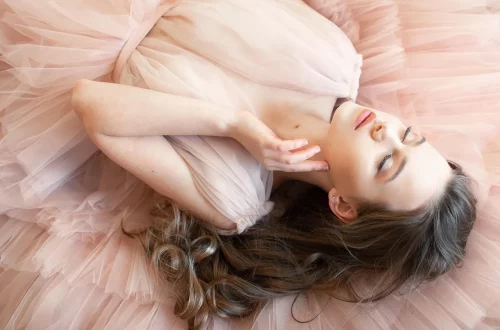
The Art of Knitting Polo: Tips and Techniques for Every Skill Level
Knitting is a timeless craft that has captivated people of all ages for centuries. It is not just a hobby but a form of artistic expression that allows individuals to create beautiful, functional items with their own hands. The rhythmic motion of the needles, the transformation of yarn into fabric, and the satisfaction of completing a project provide a sense of fulfillment that many find irresistible. Whether you are knitting for practical purposes, such as clothing or home decor, or for sheer enjoyment, the art of knitting is a rewarding endeavor.
The beauty of knitting lies in its versatility; it can be as simple or as complex as you choose. From basic stitches to intricate patterns, there is always something new to learn and explore. Each project presents an opportunity to enhance your skills and creativity. Moreover, knitting fosters a sense of community, as many enthusiasts come together to share tips, techniques, and inspiration. In an age where technology often dominates our lives, knitting offers a chance to slow down, engage with a tactile medium, and appreciate the artistry of handmade items.
As we delve into the nuances of knitting, we will explore essential tips and techniques that cater to every skill level, ensuring that everyone can find joy in this age-old craft.
Understanding Basic Knitting Techniques
Before diving into more advanced projects, it’s crucial to grasp the fundamentals of knitting. Mastering basic techniques not only builds a solid foundation but also boosts your confidence as you embark on more complex designs. The two primary stitches that every knitter should learn are the knit stitch and the purl stitch. These two stitches serve as the building blocks for countless patterns and variations.
The knit stitch is created by inserting the needle into the front of the stitch and wrapping the yarn around the needle before pulling it through. This creates a “V” shape on the front of the fabric. The purl stitch, on the other hand, involves inserting the needle from the back to the front, which creates a bump on the fabric’s front side. Understanding how to alternate between these stitches allows you to create various textures and patterns, such as ribbing and seed stitch.
In addition to mastering these stitches, it’s essential to familiarize yourself with knitting terminology. Knowing the difference between terms like “cast on,” “bind off,” and “increase” can significantly enhance your knitting experience. Cast on refers to the initial setup of stitches on the needle, while bind off is the method used to finish a project. Increases and decreases help shape your knitted items, allowing for seamless transitions in your projects.
Lastly, gauge is a crucial concept that every knitter should understand. It refers to the number of stitches and rows per inch in your knitting. Achieving the correct gauge ensures that your finished item will be the right size and fit as intended. To determine your gauge, knit a small swatch and measure it against the pattern’s specifications. If your gauge does not match, you may need to adjust your needle size or knitting tension.
Choosing the Right Materials for Your Projects
The choice of yarn and needles can significantly impact the outcome of your knitting projects. With a wide variety of fibers, colors, and textures available, selecting the right materials can be both exciting and overwhelming. Understanding the properties of different yarn types will help you make informed decisions based on your desired results.
Yarn is typically categorized by weight, ranging from lace to bulky. Lighter weights are ideal for delicate, intricate designs, while heavier weights are suitable for warm, cozy garments. Fiber content also plays a significant role in the final appearance and feel of your project. Natural fibers like wool, cotton, and alpaca offer breathability and warmth, while synthetic fibers provide durability and easy care. Blends of fibers can also offer the best of both worlds, combining the advantages of each material.
When it comes to needles, their size and material can also affect your knitting experience. Needles come in various materials, including metal, wood, and plastic. Each type has its unique advantages; for instance, metal needles are slick and allow for faster knitting, while wooden needles provide more grip, which can be beneficial for beginners. The size of the needles you choose should correspond to the yarn weight you are using, as specified in your pattern.
Additionally, consider investing in accessories that can enhance your knitting experience. Stitch markers, row counters, and cable needles are just a few tools that can help you keep track of your progress and simplify complex patterns. A good pair of scissors and a yarn bowl can also make your knitting sessions more enjoyable and organized.
Exploring Advanced Techniques and Patterns
Once you have mastered the basics and become comfortable with your materials, it’s time to explore advanced techniques that can elevate your knitting projects. These techniques not only add complexity but also allow you to experiment with your creativity and personal style.
One popular advanced technique is colorwork, which involves knitting with multiple colors in a single project. Techniques such as fair isle and intarsia can create stunning patterns and designs. Fair isle is characterized by using two colors per row, resulting in a beautiful, intricate design. Intarsia, on the other hand, allows for larger blocks of color and is often used in motifs or images. Both techniques require careful planning and tension management but can yield breathtaking results.
Another technique worth exploring is lace knitting, which incorporates yarn overs and decreases to create delicate, open patterns. Lace projects can range from simple shawls to intricate garments, making them a versatile choice for knitters looking to challenge themselves. When working on lace, it’s important to use a lifeline—a strand of contrasting yarn that can help you easily unravel your work if mistakes occur.
Additionally, mastering techniques such as short rows, cables, and textured stitches can add depth and interest to your projects. Short rows allow for shaping in areas like the bust or shoulders, while cables create a three-dimensional effect that adds sophistication to any design. Textured stitches such as seed stitch or basketweave can bring unique visual appeal to your knitted items.
As you delve into these advanced techniques, don’t hesitate to seek inspiration from books, online tutorials, or knitting communities. Engaging with others who share your passion can provide motivation and new ideas, making your knitting journey even more enjoyable.
The Joy of Finishing and Personalizing Your Projects
Completing a knitting project is a rewarding experience, but the joy doesn’t end there. Finishing techniques play a crucial role in bringing your work to life, and personalizing your projects can make them even more special.
Blocking is a vital finishing technique that helps shape and set your knitted items. By soaking your project and then laying it flat to dry, you can enhance the appearance of your stitches and ensure that your finished item looks its best. This step is especially important for lace and textured projects, as it helps to open up the stitches and showcase the design.
After blocking, consider adding personal touches to your finished pieces. This could involve embellishments such as buttons, embroidery, or fringe. Adding these details allows you to infuse your personality into your work and create one-of-a-kind items that reflect your style.
Moreover, sharing your completed projects with friends, family, or online communities can bring a sense of accomplishment and connection. Many knitters enjoy the camaraderie of sharing their work, exchanging ideas, and even gifting their handmade creations to loved ones. The act of giving a knitted item often carries sentimental value, making it a cherished gift for both the maker and the recipient.
Lastly, as you continue to grow in your knitting journey, keep an open mind to new techniques and styles. The world of knitting is vast and ever-evolving, offering endless opportunities for creativity and learning. Embrace the challenges and joys that come with each project, and remember that every stitch is a step toward mastery.
By exploring the art of knitting, you can find not only a fulfilling hobby but also a means of self-expression and community engagement. Whether you’re a beginner or an experienced knitter, there is always something new to discover and create.
—
This article does not constitute medical advice. For health-related issues, please consult a qualified healthcare provider.




